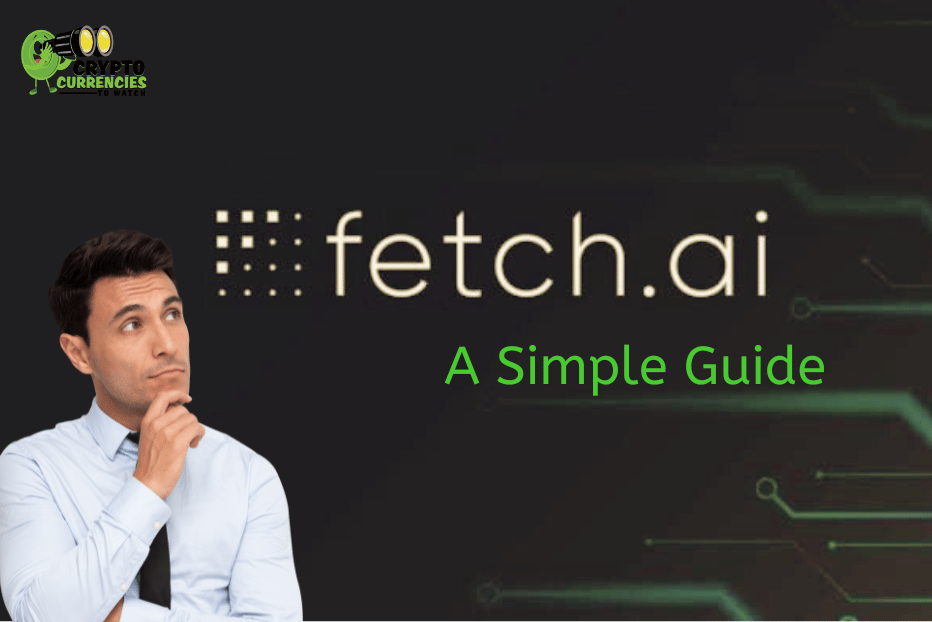With artificial intelligence (AI) dominating the headlines in recent times, some crypto investors may wonder how it affects the crypto space. If you are one, this article is for you.
Fetch.ai is a blockchain-based platform that uses artificial intelligence and machine learning to accomplish different tasks for its users. In this article, you will learn all about this blockchain and its token (FET). At the end of your reading, you will also be better informed as to whether Fetch.ai is a good crypto investment or not.
Brief History of Fetch.ai
Introduced in 2017, Fetch.ai was founded by a team based in the UK, consisting of Humayun Sheikh, Toby Simpson and Thomas Hain. Humayun Sheikh is Fetch.ai’s CEO. He has a history in artificial intelligence as he founded a machine learning/artificial intelligence company called itzMe.
The Fetch.ai network has received financial support over the years through token sales. For instance, in 2019, the platform raised $6 million in funding when over 3000 crypto investors bought the FET token through an Initial Exchange Offering (IEO) hosted by Binance.
Similar token sales, partnerships, and collaborations hosted by different companies after 2019 have helped Fetch.ai raise requisite funding.
Fetch.ai Simply Explained
Fetch.ai is a blockchain platform that performs everyday tasks, such as booking a flight, for its users using artificial intelligence (AI). In the crypto space, cryptocurrency investors can use Fetch.ai to easily identify a token trading at a lower price.
The Fetch.ai platform consists of four layers, namely, the AI Agent, the AI Engine, the Agent-verse and the Fetch Network.
-
AI Agents
Fetch.ai functions with micro-agents called AI Agents. AI Agents are computer programs that interact with other agents on a decentralized platform.
On the Fetch.ai platform, AI Agents are simple computer programs that represent users on the blockchain, either as a person or as an organization, and act on their behalf by accomplishing automated tasks for them. An AI Agent can be likened to a digital personal assistant that understands you well and makes decisions for you without stress.
These agents are said to be simple computer programs because they are relatively easy to build without deep knowledge of computer coding. Each AI Agent can also be accessed by another AI Agent on the network.
AI Agents have the ability to make predictions and learn from previous mistakes. This ability enhances the high performance of the network. Some of the crypto-related tasks executed by AI Agents include automated trading transactions, market trend analysis and risk assessments. They may also provide trading advice based on the state of the market.
-
AI Engine
AI Engine powers Fetch.ai’s operations. It uses Large Language Models (LLM), a machine learning technology that processes large amounts of text and transforms it into actionable tasks. These tasks are then performed by the most suitable AI agent among the agents and users on the blockchain.
AI Agents are registered on the Almanac contract, a smart contract present on the Fetch.ai blockchain. Once registered, AI Engine can then access the AI Agents.
The work of AI Engine is to analyze and understand the inputs of the users and connect them to the most fitting AI Agent to execute the task. AI Engine achieves this by assessing previous interactions to understand users’ preferences.
The chat interface users utilize to provide their inputs is called DeltaV. When the AI Engine receives the input, it processes them and links them to the most appropriate agent to perform the task. If unclear, AI Engine may request reports from users to ensure a better experience next time.
-
Agent-verse
Agent-verse is a Software as a Service (SaaS) used to develop AI Agent solutions. It is a cloud-based platform that hosts AI Agents and their services. The platform allows users to access, develop and edit their own kind of AI Agents.
Available in the Agent-verse are templates that users can easily use to develop agents. Due to the fact that AI Agents can be developed without deep knowledge of computer coding, the templates present in the Agent-verse can be used to create customized agents that would perform a wide range of tasks on the Fetch.ai network.
In addition to developing AI Agents, the Agent-verse allows users to search, discover, and verify agents registered on the Almanac contract.
-
Fetch.ai Network
The Fetch.ai network is the backbone of the whole platform. It supports the other layers of the blockchain. The Fetch.ai network includes different elements that ensure that the platform runs smoothly and efficiently.
Such elements include the Almanac contract and the Fetch ledger.
-
Almanac Contract
The Almanac contract is a smart contract that runs on the Fetch.ai blockchain. It can be likened to a library because it holds all the information about the AI Agents.
The Almanac contract plays an important role in maintaining the smooth running of the platform. All AI agents on the Fetch.ai platform are registered on the contract. This makes it easy to retrieve information about any agent within the network.
Information held by the Almanac contract is updated regularly because the AI Agents are required to re-register their information with the contract after a certain length of time. This ensures accuracy of information at all times.
Fetch Ledger
Fetch Ledger is a secure ledger technology that keeps track of all the transactions that take place within the Fetch.ai blockchain. Fetch Ledger employs a Proof-of-Stake consensus mechanism where validators are allowed to verify transactions and create new blocks on the blockchain.
As with the Almanac contract, the Fetch ledger is an important element because it ensures that all transactions recorded on the network are transparent and not tampered with.
FET Token and its Use Cases
FET is the native token of Fetch.ai. So, while Fetch.ai is a blockchain platform, FET is a cryptocurrency.
Just like bitcoin, the FET token has a fixed supply. The total number of FET tokens that will ever exist is 1.15 billion. The fixed supply of the FET token makes it scarce and protects it from inflation.
These tokens can be bought from crypto exchanges. A good example of a crypto exchange where users can buy FET is Coinbase.
The FET token was initially released as an ERC-20 token on the Ethereum network. This was done for two reasons, namely, to create awareness about the token and to raise funds for Fetch.ai.
Presently, the FET token runs on its own blockchain, Fetch.ai, although some FET tokens remain on the Ethereum network. Using the Fetch wallet, crypto investors can buy, hold and use their FET tokens.
The FET token’s use cases include the following:
- Transaction and Service Fees
The FET token is the only medium of exchange within the Fetch.ai platform. Crypto users who make transactions and perform automated tasks within the platform pay for the services using their FET tokens.
Also, users who generate information or create customized AI Agents, using the Fetch.ai network, pay fees with their FET tokens.
- Staking and Network Integrity
Fetch.ai adopted a consensus mechanism known as Proof-of-Stake (Pos) to allow validators stake their FET tokens in order to maintain the integrity of the network. The blockchain also supports a process known as delegation for users who are not validators because they do not have enough FET token holdings. These individuals are allowed to delegate their staking to validators and earn rewards based on the percentage of their tokens.
- Incentives
As a user, you may stake your FET to earn rewards, which may be up to 10% interest in a year. Developers also earn extra FET tokens when they create Decentralized Applications (dApps) that contribute to the network’s growth.
- Governance
Another benefit users may get from staking their FET tokens is obtaining a governance token. A governance token affords crypto users the opportunity or right to have a say in future decisions and changes to be made on the platform.
How to Use the Fetch Wallet
The Fetch wallet is designed to hold native FET tokens. You can use the Fetch wallet to either make deposits into your account or send tokens to another account.
Deposit Tokens
To make a deposit into your account, follow these steps:
- Enter the wallet and input your credentials.
- Fill in your account address as the destination address to which your funds should go.
- Once the tokens have been sent, it will be reflected in your balance.
Send Tokens
You can send FET tokens to another account by following these steps:
- Enter the wallet and input your credentials.
- Fill in the recipient’s address.
- Input the number of tokens you want to send.
- Choose between Low, Average and High, the transaction fee you want to pay while bearing in mind that the more the transaction fee, the faster your transaction will be processed.
- Select Send.
- Review the transaction details. If the details are correct, click on Approve.
Is Fetch.ai a Good Crypto Investment?
The FET token is a cryptocurrency, and just like every other cryptocurrency, it is a highly volatile asset. Due to this, it is very important to do your own research before investing.
Thorough research will help you understand the risks and rewards associated with Fetch.ai investment. It will also help you make informed decisions regarding your investment goals because you will be able to decide clearly whether to trade or stake your tokens.
Careful research will help you answer questions regarding when to buy, how much to buy at a time, and when to sell. This will ensure that your decisions are based not on hearsay but on real facts.
So, is Fetch.ai a good crypto investment? You decide!

